At our wedding reception in December of 1965,
one of my husband’s oldest friends and his wife stood in line, shook our hands, wished us well, and jokingly said,
one of my husband’s oldest friends and his wife stood in line, shook our hands, wished us well, and jokingly said,
Ray and Dick were born just a few days apart and ‘met’ at the church their parents attended when they were infants.
They went to high school together and were part of a group of guys who kept connected through college and beyond.
Finding out that they were thinking about
Finding out that they were thinking about
traveling around the world the same time we were?
Astoundingly good news!
And that’s exactly what happened, eight months later.
Only their location was a little more in flux than ours,
we traveled on different ships,
and we weren’t at all sure where they would end up
once we all got there.
As it turned out, for the first few months,
they were housed at a mission station in the bush, about 40 miles away from us. To get there required driving on this dirt road,
the same corrugated dirt road that we traveled
nearly two years later when I went into labor.
There were villages located all through this area,
and all of the people who lived in them walked or rode their bikes to the mission for two primary reasons:
to receive quality medical care or
to get married in the chapel.
Every few weeks, we would drive out that road
to see how our friends were doing.
Or they would come charging into Choma,
often on the motorcycle they bought their first week there.
Their presence was a huge gift to us. Huge.
This was the small rondaval they called home for those months. It was one room, with a corrugated tin roof and an outhouse.
And you may remember how we lived . . .
in a stucco and brick house, with three bedrooms and indoor plumbing.
Plus, we had electricity about 80% of the time.
And yes, we did feel more than a little guilty about
encouraging them to come on this adventure.
They both wanted to teach school,
so while they waited for an assignment,
they lived at Macha Mission.
Ray managed this workroom, and used his considerable mechanical gifts to repair all kinds of things.
Anita made herself useful wherever she could and was
so delighted when they rigged up cooking equipment in their small home.
Prior to that, they had to eat in the main house,
with a tribe of other workers.
Once in a while, that kind of community is a grand thing – if everyone is moderately compatible and easy-going.
But three meals a day, seven days a week?
It can be tough sledding.
In about our third month there, we had a true adventure together.
There was a wedding at Macha – and we were invited!
The wedding was scheduled for about 10:00 a.m.,
but didn’t begin until a little after noon.
Why?
Because in Zambia, it was customary for the groom
to purchase the attire for the bride.
This groom didn’t have a clue about sizing and the dress
he selected for his small wife-to-be was about four sizes too big.
The entire mission staff was busily trying to make adjustments
so that this girl could come down the aisle.
Many safety pins and an improvised cummerbund later
(made from a cloth diaper) – and, voila!
It worked and somehow the wedding happened.
Some western traditions were incorporated – like the clothes and the attendants. But one custom was entirely Tongan:
the bride never looked up, never smiled. Ever.
This was the most important and serious day of her life
and she was not supposed to make light of it in any way.
And she did not.
Following the ceremony, we were invited to the feast held in celebration of the new family – at the groom’s village.
The women had been cooking for hours,
gifts had been gathered,
and the couple’s new hut had been officially decorated . . .
by the groom, with new clothing, fabric and other gifts for his lovely bride.
We drove over a bike path, then a cow path, then through a small stream, where we had to get out and push the Kombi-bus. The bride and groom hitched a ride with us, however, so we knew the party couldn’t begin until we got there.
The houses in the village were made of mud bricks, the roofs thatch. The smaller structures were grain storage bins because the staple food for this entire region is ensima, a porridge made from ground field corn. Every village kept a ready supply of the tough kernels in these small, raised huts, out of the reach of hungry warthogs and wandering cattle.
In the morning, ensima is served thin, gruel-style.
For meals later in the day, it is quite stiff and usually served with a relish – most often vegetables, but on special occasions, chicken or beef.
This was a special occasion and there was chicken cooking in the pots!
Meals were cooked communally and sometimes eaten together,
sometimes in smaller family units.
On this day, we were ushered into the groom’s hut and food was brought to us.
We felt overwhelmed and embarrassed by so much special attention,
but had been told ahead of time what to expect
and to just receive this hospitality for the lovely gift it was.
The groom’s hut was not quite as large as this one and did not have windows,
but it was cozy and welcoming.
As I recall, I was not feeling at all well that day, but I was determined not to miss this once-in-a-lifetime experience!
You can just barely see that the groom has a good supply of both sugar and hand soap – high on the list of desirable products to own.
They brought us so.much.food – stiff corn meal mush and some stewed chicken to go with it. And we loved the enamel ware bowls it came in!
This was the view looking out the door of the groom’s hut,
just a snapshot of village life.
After everyone had eaten their fill, the party began.
There was dancing,
and there was singing,
and there was gift-giving.
Each gift would be danced up to the couple –
a five-pound bag of sugar,
a box of tea,
a bar of soap or a box of soap flakes.
Everyone was delighted to be there and showered this
couple with love and generosity.
About six weeks after this remarkable adventure,
Ray and Anita were moved 500 miles south of us
to one of the oldest mission stations of the denomination.
It was located in the beautiful, rocky landscape of the Matopos hills in what was then Rhodesia, now Zimbabwe.
Getting together got a lot more complicated.
We thanked God for the steam train and made the effort, however.
And we got to see some gorgeous country in the process.
And we got to see some gorgeous country in the process.
This is the school where Ray and Anita taught for nearly two years. They had indoor plumbing and generated electricity during daylight hours. They loved their students and made some long-time friends in this place.
Whenever we visited, they took us sight-seeing.
And there were such beautiful sights to see.
They came back to Zambia to visit us, too.
We celebrated birthdays and anniversaries together when we could, laughing and enjoying the long threads of our shared history.
Anita was one of the greatest friends of my life.
She taught me how to cook, how to laugh,
how to enjoy life.
She died one month before I began my life in Santa Barbara
and I have missed her ever since.
Ray was skilled at so many things and so generous with those skills!
He and Dick shared many years of close friendship.
After we returned to the States,
our families gathered every New Year’s Eve and Day,
and vacationed together several times.
Those ties were begun here,
in our bright red kitchen and their hilltop adobe home.
Ties that connected us heart to heart,
soul to soul.
Sharing such life-changing experiences binds people
in ways that are hard to describe or define.
But I am eternally grateful for all of it –
the experiences,
the ties,
the friendship.
I am so very glad we had this cross-cultural
adventure when we were young,
but I find that what I miss now that I am not-so-young is
not the adventure itself, but that sense of long history with heart-friends.
It has never been replicated in our lives.
And as I look at these old pictures,
as I read the letters I sent home,
it is this connection that I miss the most.
There simply is no substitute for it.
Thank you, Ray and Anita, for loving us well
and sharing our lives for so many years.
I miss you.
I will join this at Jennifer’s and at Emily’s and at Duane’s places. Also with Laura Boggess and with Michelle and Jen and the SDG:












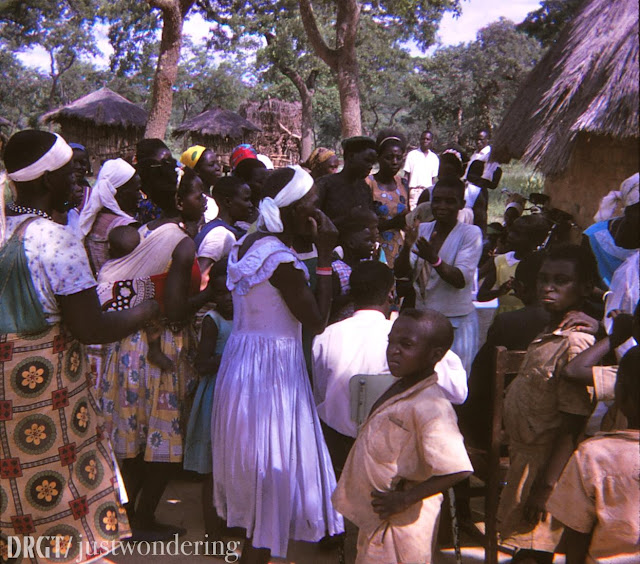

















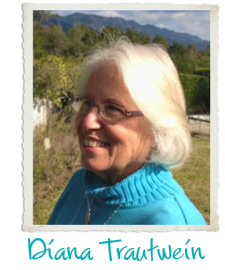
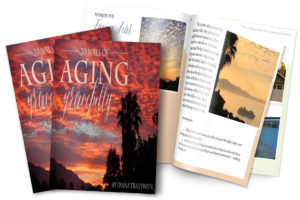
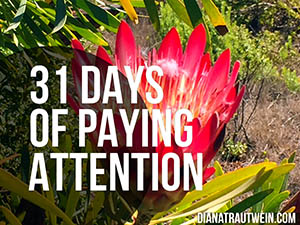



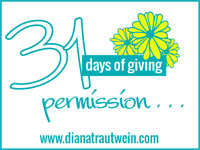















Your story is so rich, Diana … not just this one beautiful story here, but the whole of it. I really wish we could sit a while at Laity Lodge (or anywhere!) in the near future to talk more about this. How long were you living and serving there? Which years? Perhaps you’ve shared this elsewhere, and I’ve missed it. If you’d rather direct me to an old post that gives the particulars, that’s fine too.
Thank you, Jennifer. This was a very long time ago and I’ve been slowly unpacking it ever since one of my grandsons scanned all of our old slides for us. And then a week ago, I discovered a stash of over 60 old letters I had written to my folks, out in a storage shed filing cabinet. If you click on the tab above that is titled “An African Journey” you can read the intro to these posts and there is a link there that will take you to all 4 of them, in reverse order, of course!
We were married in December of 1965, I graduated from UCLA in June of 1966 and in August of that year, we boarded a freighter in Brooklyn and sailed for 18 days to Capetown, where we spent a week waiting for a van to arrive which we drove north 1500 miles to our home in Zambia for the next two years. It was a rich experience – very old school in terms of ‘missionary intelligence,’ so we were not happy with a lot of what we saw in that regard. But – we were also very young, with the arrogance of youth – so I’m not quite as quick to judge as I was then! These posts will be mostly personal remembrances rather than political statements. I want them down in writing for my kids and grandkids and this is a fun way to do that.
Ann Kroeker was musing on Facebook yesterday about how can we be prepared for the unforeseen challenges marriage brings. Maybe there’s an answer in this African wedding ceremony. Maybe if we took it that seriously, daring not to smile.
You may be onto something, Megan – but still…I kinda like smiling brides. I liked this bride, too, but it was a bit of a jolt to see her so, so serious!
Megan sent me here to be sure I saw this marvelous story about life in Africa–Diana, I’m so glad you included all the rich detail! My father-in-law was born and raised in Africa, in what is now DRC. I appreciated seeing these photos and imagining his life there, more vivid from your description. Great adventures with great friends–is it the experiences you were unable to duplicate? Do you think that the environment, people and experiences that created such a bond?
I see what you mean, Megan…if we felt the joy of our wedding day, but entered with a degree of solemnity and reverence for the as-yet-unknown road ahead of us, we might be at least ceremonially prepared (which might, in turn, prepare and strengthen us as we think back).
Actually, it is the friendship (and the experiences, too, in a way – as we have never again lived far away from where we were born and raised). Anita died after a long, difficult illness. Ray remarried and is happy again, but the connection has shifted to a once-a-year Christmas greeting exchange. And there has never been another couple with whom we’ve shared so much of life. We each have close long-term friends but not another couple quite like they were to us. And that’s just the way of life, isn’t it?
You may be onto something with the ceremonially serious idea. Hmmm…wonder if it could be worked into the marriage liturgy somehow… Trouble is, that point of view is not generally welcome in our culture.
This couple did lighten up during the gift giving, but as I recall, the bride was still quite demure and removed. And actually, if you want to get me started down another entirely different track (and I’m not sure you do!) that speaks to me of how very much women were (and still are) considered to be second class citizens in that place, in that time. Despite the fact that the guy had to outfit the girl (and often submit lobola – or marriage cattle – under the radar), women were property, period. And going into marriage was a life sentence for many – of back-breaking work in the fields, bearing many children and sometimes adjusting to other wives, too. I am sure much has changed in the last 40+ years, but … I get the no-smile thing.
Hello Diana,
What fun to sop by here from Imperfect Prose and scan your photos. I lived in West Africa for many years so the frangipani trees and the round huts were sentimental to me to see again. How long were you in Zambia?
Jennifer Dougan
http://www.jenniferdougan.com
What a beautiful storyteller you are. I love every bit. Oh, and I know this is random, but I REALLY love Anita’s white dress. I would rock a dress like that.
Such rich, rich memories. I find I am filled and emptied all at once by this telling. Grieving for Anita and for the feLlowship that is missing in much of life today. Seeing you this way–so young and…vulnerable? Is that the right word? How beautiful to walk with you then. And now.
Ah – those photos made me homesick for a land that is not my own, though it was my parents’. My mum was born in Zambia, my Dad in Zimbabwe. I loved seeing the white-white of the wedding dress in the bright sunshine. Thank you for sharing – coming via Emily.
It is a theme that runs through my heart these days Diana – relationships are the most important thing of all. I love these stories – just love them. It is such fun to look at your pictures and know I have some that, aside from the place, look so similar (hair styles, clothes, etc).
It is a beautiful country and a wonderful adventure. Thank you for sharing it. I know you family will be blessed, as we are to read these stories.
What a precious post. I was impressed by the attitude of the bride. Today is my 25th wedding anniversary and I wrote about the 7 things I’d learned about marriage. I think if today’s bride spent as much time thinking about life with her husband as she did wedding plans, marriages would be in much better shape.
Linking up from SDG,
Susan
Even though I’ve seen your face all over the blog world, Diana, I’ve never actually been to visit you until now. What a wealth of amazing experiences and wisdom you must have!!
We currently have friends who are in Zimbabwe as missionaries, they might get a kick out of this post.
Thanks for sharing your pics, your heart, and even your sorrow here.
This romp through an entirely different culture was delightful.
I so enjoy your story… and so loved my time at weddings and other special events in Uganda. MY “kids” could smile by then and the joyous ending at the wedding made most of the Ugandans smile, too. And connecting with people who are our dear friends over there is so heart-filling. Miss it much and miss THEM much, too.
Thank you, Laura. Yes, I suppose I was vulnerable – though I wasn’t self-aware enough at the time to recognize that. Deep friendships are increasingly rare, so I miss Anita a lot. Her final year was a difficult one and she basically shut me out of it, which was so hard. She asked her husband to call and invite me to visit towards the very end, but died before our scheduled time together. That is one of the biggest holes in my life. I was honored to write and deliver a eulogy for her and I have some limited contact with their kids – but she is gone and there just is no replacing that. I appreciate your words and your kind spirit so much, Laura. Thanks for reading and commenting.
Amazing. Most people don’t even know those two countries, much less have a family history there! Thanks for letting me know that piece of your story.
Thank you, Linda Lou, for your always kind comments. And I am SURE you have some pictures with similar hairstyles, clothes, etc. Sometimes it feels like yesterday. And sometimes it feels like several lifetimes ago.
Well, you know, Susan, I think you’re right! SO much energy (and money) goes into planning the ‘big day.’ And not much goes into planning or even thinking about the whole rest of your life together! Thanks so much for coming by and commenting.
Well, thanks for checking me out, Kelli! I will have to do the same. I am guessing that your friends in Zimbabwe will find these pictures sort of quaint, in the extreme. Things have changed so dramatically in that part of the world, what with AIDS and horrendous dictators. Blessings on them as they minister in the midst of so much uncertainty there. They are brave people! And I’ll be putting up a few more pictures of Zimbabwe in a week or two. We traveled there with my husband’s parents the second summer we were there and I have some almost 50 year old pictures of the great stone structure from which the country derives its name.
Always glad to bring a little delight into your life, David. Thanks for letting me know you were here.
You were there longer than we were, I think, and more recently, too, so your stories would be very different than ours. It’s a spectacular part of the world and I am so grateful we had the privilege of living there when we did. Glad these words and pictures could help you remember and re-connect.
i am left breathless by this post. and can’t stop thinking about the way the bride never looked up. the way she took it so seriously. i wish i had taken it more seriously. wish i hadn’t worried so much what others were thinking as i walked down that aisle. and you are so beautiful, friend. truly.
Thank you, Emily – for reading and commenting and saying nice things. I look at these old pictures and think to myself – yeah, I was sorta beautiful, in my own way. At the time, it honestly never, ever occurred to me. And from that time I went into a massive battle with overeating and too many pounds that has lasted the entire rest of my life. Illness two years ago led to half of it dropping away over time, but this body still clings to the other half – like some sort of life-preserver. Which in many ways, it was – and maybe still is. Someday I’ll do some writing on that very tender topic. Not yet, though…
I am absolutely overwhelmed by this–this walk through this time of your life, this culture and its traditions. And I’m so glad you have all these photos to bring it all alive–to color it! My heart aches for the loss of your dear friend and the hole it left.
You were and are beautiful through and through.
I wonder…could you add a An African Journey sidebar with links to each post? I’d like to go back and read them again–and that way others would be sure not to miss any.
It’s on my tabs, Sandy – and I finally fixed the labels to read correctly! I couldn’t figure out why there were not posts when I’d click through from the introduction on the tab – until I realized I’d confused the words ‘journey’ and ‘journal.’ Not it’s right and you can read all four of the posts thus far by clicking first on the tab at the top, then on the link at the top of the tab page.
Thanks for your kind words, friend. It’s been really good to re-visit this time, to remember this piece of our story.
Thank you so much for sharing the stories of your life in Africa! As the one who holds and tells the stories in my own family, I am thrilled when someone treasures the history of their family and ensures the stories are captured for the coming generations. What an amazing gift you’re giving your children and grandchildren!
Your words about the loss of long history with heart-friends echoes in my own heart. I lost one of my heart-friends earlier this year after a long and difficult battle with breast cancer. I have other friends I love dearly, but nothing takes the place of those friendships that were established through the shared life experiences of years.
You are welcome, Chrystal – and thank YOU for leaving such an encouraging comment. And clearly, you know what it is to lose a piece of yourself and your own story when a long-time friend dies. There is really no replacing that, is there?
Long threads. Yes. So much more I could say, but I think that’s the gist of it. . .
I will admit that hour response mystifies me a bit. Long threads of what? Tell me by the Frio. :>)
Well….make that ‘YOUR’ response. Yikes.
“
We celebrated birthdays and anniversaries together when we could, laughing and enjoying the long threads of our shared history.”
Long threads of shared history, you wrote. 🙂
and (whew! I thought I’d lost my mind!!!!)
Ah….it pays to go back and re-read my own words when reading a comment from last week. :>) Thanks for the clarification.
My pleasure. And maybe we’ll still talk about it down by the Frio. I’m hopin’…